Good day participant of this season 3 week 4 of the steemit crypto academy. This is my homework post for the lecture of @Stream4u on Defi and yield farming.
Question 1: What Is the Importance Of the DeFi System?
Defi is a decentralized finance system that manages financial transactions using blockchain technologies. DeFi intends to democrat finance by replacing old, centralized systems with peer-to-peer connections capable of providing a wide range of financial services. DeFi uses this peer-to-peer exchange to challenges the centralized financial sector by terminating the intermediaries and empowering common people.
You have complete control over your assets and own the key pair for your wallet when you use DeFi instead of CeFi. Decentralized applications (dApps) created on blockchain platforms are also required for consumers who want to participate in DeFi.
Some of the important I see in Defi are:
Transparency: Greater transparency comes with decentralization. The platform's data is freely open to inspection since the distributed ledger contains data about all of the events that have occurred on a blockchain network is accessible by everyone.
Quick access to loan : DeFi has also played a key role in the growth of peer-to-peer lending and borrowing. End-users can reap significant benefits from these types of borrowing and lending options.
If you wanted a loan before DeFi, you had to go to the bank and waste so much time. Even in the middle of the night, DeFi allows you to secure a loan with just one click. As long as you have internet connectivity, you can surf the market anywhere and at any moment.Another importance among many is that there is no central party such as central banks, government bodies that may have any negating effect on transaction order.

Question 2: Flaws in Centralized Finance.
In centralized finance, unlike decentralized finance, a central exchange handles all cryptocurrency trade orders. The central exchange is administered by specific individuals who manage the funds. It means you don't have access to your wallet since you don't have a private key.
When you buy/sell on a centralized exchange, you lose ownership of your cryptocurrency. Furthermore, you must follow the rules set forth by a controlled exchange. In addition any centralized exchange's rules apply to you either favourable or not.
Users in CeFi entrust their cash to centralized exchanges of their choosing and have no control over them. In essence, we're putting our faith in the people in charge of the enterprises to maintain a high level of security and safeguard the assets. There's a good chance you'll lose them if the exchange is hacked.

Question 3: DeFi Products. (Explain any 2 Products in detail).
1. Defi Lending and borrowing.
By allowing lending and borrowing, DeFi gave finance a new path. Decentralized financing, often known as "Open Finance," provided crypto holders with chances to earn annual returns on their investments. Consumers might take loans at a set interest rate thanks to decentralized borrowing. The goal of lending and borrowing is to meet the demands of the crypto industry while also serving financial sector use cases.
Example of lending and borrowing platform is Compound Finance
Compound Finance:
Compound Finance which is based on the Ethereum blockchain, is a decentralized lending and borrowing technology. Borrowers can obtain credit in exchange for depositing collateral, and lenders can deposit capital in exchange for a return on their investment. This is made feasible via the Compound protocol, which creates liquidity for cryptocurrencies by utilizing computer algorithms to establish interest rates. Rober Leshner came up with the idea for Compound Finance, which he launched in 2018.
Compound Finance provides users with interest rates that are significantly higher than the current global average when compared to traditional banks.
The method of borrowing and lending is automated using smart contracts. This involves the handling and storage of funds deposited to the platform. An algorithm adjusts interest rates based on supply and demand, increasing or decreasing rates.
2. Decentralized Exchange:
Like other DeFi product, Decentralized Exchanges (DEx) are one of the most important features of DeFi, with the most capital locked. Without the use of a centralized intermediary or custodian, DExs let users to trade or swap tokens for other assets. Traditional (centralized) exchanges provide similar alternatives, but the investments available are subject to the will and costs of the exchange. Another disadvantage of CExs, which DExs address, is the additional cost per transaction.
Example of decentralized Exchange is Pancakeswap
Pancakeswap:
PancakeSwap is a decentralized exchange platform lets users to exchange coins and tokens with no need for a centralized middleman while maintaining custody of your assets. It's based on Binance Smart Chain. Despite the fact that pancakeswap is based on Binance smart chain, it is not a centralized exchange like Binance.
PancakeSwap is one of a growing wave of DeFi services that let crypto traders to perform transactions with trade tokens without having to pay a middleman a substantial fee. it is one of the largest such DEXs on the Binance Smart Chain. As at the time of writing this homework, pancakeswap has a trading volume of $491,724,797, with 1601 supported coins.
Pancakeswap can be accessed from the trust wallet as shown in the image below
There is another popular DEX on Ethereum called (Uniswap) with substantially higher average trade volume as well.

Question 4: Risk involved in DeFi.
While DeFi has a lot of advantages, it also has some risk associated with it.
There are risks in giving people total authority over their finances and assets. The chance of losing once asset is high due to loss of private keys, forgotten passwords, and mistyped addresses.
Although a blockchain could almost never be altered, other areas of DeFi could be hacked which can result to loss or theft of funds. All potential use cases of decentralized finance depend on hacker-prone software systems.
Loan Collateral: Almost all DeFi lending transactions necessitate collateral equivalent to, if not greater than, 100 percent of the loan's value. Many types of DeFi loans are not available to those who meet these qualifications.

Question 5: What is Yield Farming?
Yield farming is a method for crypto investors to profit from their investments. Yield farming is a means of getting a return from trading fees by depositing units of your cryptocurrency into a lending mechanism.
The goal is simple: puting your money into one or more investing platforms in quite away that it grows dramatically over time. In other words, yield or performance farmers are solely interested in investment options that will allow them to grow their wealth.
Yield farming is identical to collecting a loan from a bank. When a bank lends you money, you must repay it back with interest. Yield farming works in a similar way, the only difference is that the lenders in yield farming are crypto investors like you. Yield farming is a method of providing liquidity in DeFi protocols like Uniswap in exchange for returns on unused cryptos that will just be sleeping in your wallet. Yield farming is a way of utilising such crypto.

Question 6: How does Yield Farming Work?
Yield farming works in such a way that when liquidity providers (LPs) i.e User who add funds to liquidity pools.
What is a liquidity pool?
It's essentially a fund-holding smart contract. LPs are compensated for their contributions to the pool's liquidity. Fees earned by the underlying DeFi platform or other source may be used to fund this payout.
The production of yield is never an autonomous process. The Automated Market Makers (AMMs) – liquidity providers (LPs) that add cash from occasionally to sustain the ecosystem – usually involve large numbers of participators. Its similarity to staking allows LP to earn benefits by making transactions easier in a blockchain network.
Return on yield farming is usually calculated on an annual basis. This means that you should anticipate an overall yield for a more precise forecast over the course of one year. The income of the farming is however quite complicated because it depends heavily on the capital you invest, the policies you use.
Return is more complex compared to staking, and chains can be difficult to trace. While the return rate of yield farming is higher, it is also more risky.

Question 7: What Are the best Yield Farming Platforms and why they are best. (Explain any 2 in detail)
Since yield farming can be done on many platforms both on ethereum blockchain and Binance smart chain (BNB), I will like to pick a platform from the ethereum blockchain and one on Binance
UNISWAP:
The platform uses Ethereum and hundreds of ERC-20 tokens, as well as staking in liquidity pools. For each swap, liquidity providers receive a percentage of the trading costs, as well as a significant amount of interest if the principle is large enough. The pool and market swings affect interest rates on Uniswap and all other DEXes.
Uniswap platform allow Users with tokens to release them to the system in order to offer liquidity. When a consumer purchases a token via uniswap, they are charged with network fees, which is then split among all liquidity providers for that token, with lenders with larger suppliers receiving a larger share of the pool.
As put it another way, Uniswap functions in a similar way to bank savings accounts. You can supply liquidity by turning over your cryptocurrency in exchange for a little quantity of cryptocurrency, whereas your real cryptocurrency may be used for other purposes (in this case, to sell to potential buyers.)
How to add liquidity to UNISWAP
- From the Trust wallet application, you will go to DApps, an icon at the bottom of home interface of trust wallet.
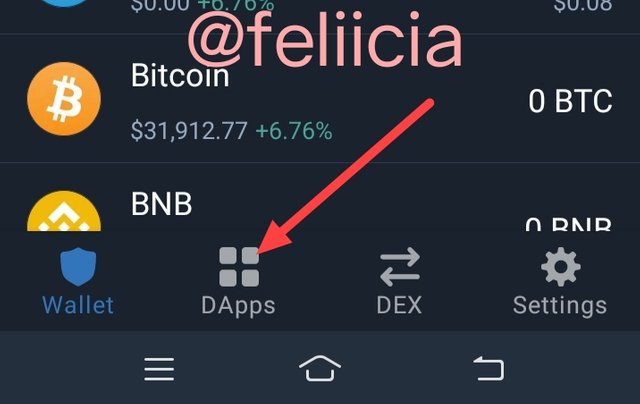
- On the search space of the trust wallet, you will type type "https://app.uniswap.org".

- when you are at the UNISWAP interface, you will connect your Ethereum wallet or metamask. After you have done that, you will click on pools at the bottom of the interface. Then you will be taken to where you will select the pairs of your liquidity and the quantity.
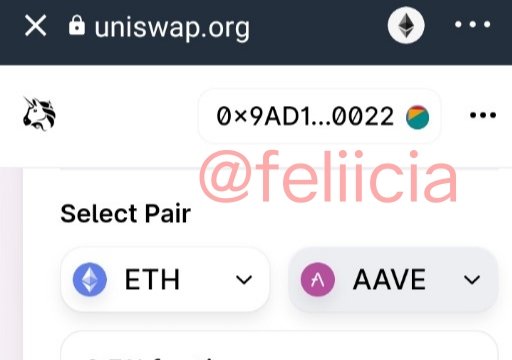
PANCAKESWAP
PancakeSwap is a decentralized exchange that works similarly to Uniswap (DEX). It works in a similar way to Uniswap, but rather than Ethereum, it runs on the Binance Smart Chain (BSC) blockchain and has a few extra gamification-focused features. With a total worth of around $7 billion, it is by far the most valuable of all BSC DeFi projects. BSC token exchanges, interest-earning staking pools, a gambling game in which users guess the future value of BNB, and even non-fungible token (NFT) art are all available through PancakeSwap.
Liquidity on Pancakeswap can be accessed through the trust wallet DApps just like I have shown it for Uniswap.
How to access Yield farming on Pancakeswap through the Trust wallet
Click on the DApps Icon from the Trust wallet interface, and search for Pancakeswap through the search space provided and you will search for https://exchange.pancakeswap.finance.
After you have been taken to the pancake swap interface, you will connect your BSC wallet at the top right corner as shown below. You will now click on the men icon at the top left of the screen where you will see farms and you will select.
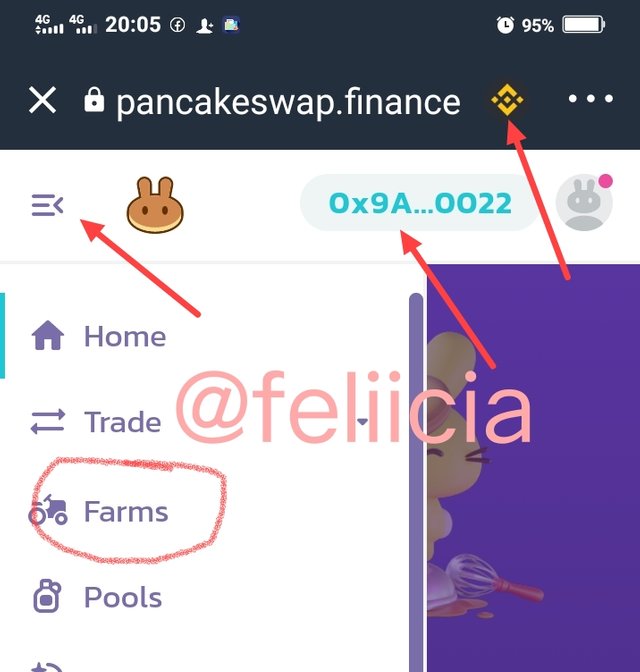
- At the farming page, you will see the pairing and the APR for each pairing and you can select from the list as shown below.
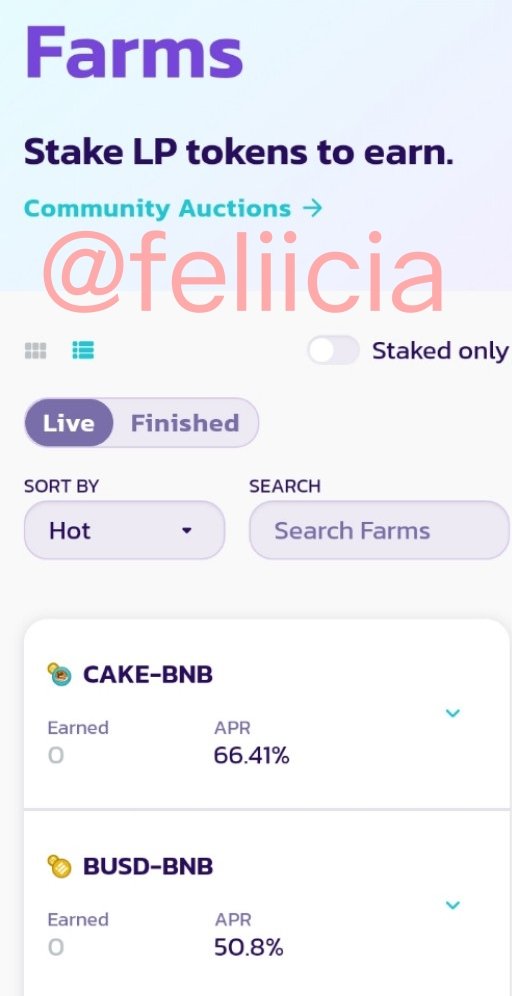
Both Pancakeswap and UNISWAP face some risk in liquidity such as Impermanent Loss. Impermanent Loss is the difference that comes on the value of your asset from keeping it in your wallet and puting it in the liquidity pool.

Question 8: The Calculation method in Yield Farming Returns.
APR and APY may look identical, but knowing the difference and how they are utilized, helps you to take smarter financial decisions. Let us look at them one after the other.
APY:
This metric is used to assess possible investment gains or final equilibrium in a deposit account. You should remember that the final balance is dependent on a number of aspects to make good investment decisions. Not only do you have to keep in mind your interest rate but also your time frame and interest type which may be compound or simple interest.
You can compare a variety of interest rates with different compounding periods using annual percentage yield. This is due to the fact that APY is a percentage-based calculation identical to compound interest.
The following formula is used to calculate the annual percentage yield:
APY = (1 + r/n)n – 1
From the formular, r = interest rate
n = the amount of times each year that interest is compounded
You can get the annual percentage yield using this formula because you already know what APY is. Making all of these calculations for each offer you want to examine, though, would be tiresome. Using this APY calculator is a lot more convenient and time-saving option.
APR
APR is the annual rate of return, expressed by percentage before compound interest is taken into account.
For example, Let's say we want to calculate the amount of interest that will be added to your investment daily, with the investment of $150, at 20%APR
The Apr will be expressed as decimal by dividing the rate by 100 =
20/100 = 0.20.
You will then divide your APR by the number of compounding period and multiply it by your investment
0.20/365 multiplied by $150
Daily accrued will be = 0.05

Question 9: Advantages & Disadvantages Of Yield Farming.
It's an approach that may be implemented now with a variety of objectives and platforms. Some DeFi protocols devoted to yield farming are currently available, some of them have been in use for several years and have proven to be reliable.
The yield farm also offers higher profits, , than almost every other conventional financial channels.
Disadvantages of Yield farming
Whales, who have a lot of money to invest, benefit from the strategy's adoption. A individual with little resources may not make any profit at all, and may even lose money due to commission payments.
It's a complicated approach that should only be used by persons who have a good understanding of finance.
There are also hackers and swindlers at each coin and are willing to sail on vulnerable contracts that are still pending and are waiting to be checked. Decentralized as they are, DeFi projects execute without mediation from a third party in automation and thus have to operate without defect. Any malfunctioning of the application could greatly affect investment capital and the entire ecosystem.

Question 10: Conclusion on DeFi & Yield Farming.
DeFi has interesting opportunities and has the ability to establish an economic systems that is genuinely open, transparent, and immutable. Because DeFi is made up of a variety of highly compatible protocols and apps, anybody can monitor all transactions, and data is easily accessible for users and researchers to study.
Although this innovation has a lot of potential, it also has several drawbacks. Smart contracts can contain security flaws that allow for unintentional usage, and scalability issues limit the amount of people who can use them. Furthermore, in some circumstances, the term "decentralized" is misleading. External data sources and unique admin keys are used by many protocols and apps to govern the system, perform smart contract upgrades, and even initiate emergency shutdowns. While this isn't always a problem, people should be aware that there is a lot of trust involved in many circumstances.
Yield farming is a new trend in the cryptocurrency industry that has piqued the interest of a lot of people. It appears to be quite promising, and it is currently widely regarded as one of the most popular strategies to profit from asset ownership.
Yield farming will undoubtedly keep evolving. Technological innovations in the DeFi network have become widespread, and yield farming is unavoidably here to stay, albeit with some adaptation and adjustment

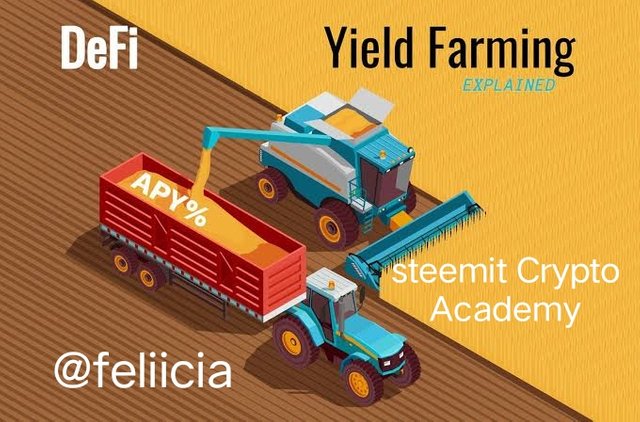
.jpeg)

Hi @feliicia
Thank you for joining The Steemit Crypto Academy Courses and participated in the Homework Task.
Your Homework Task verification has been done by @Stream4u, hope you have enjoyed and learned something new.
Thank You.
@stream4u
*Crypto Professors : Steemit CDecentralized
#affable
Downvoting a post can decrease pending rewards and make it less visible. Common reasons:
Submit
Thank you professor @stream4u..
Downvoting a post can decrease pending rewards and make it less visible. Common reasons:
Submit